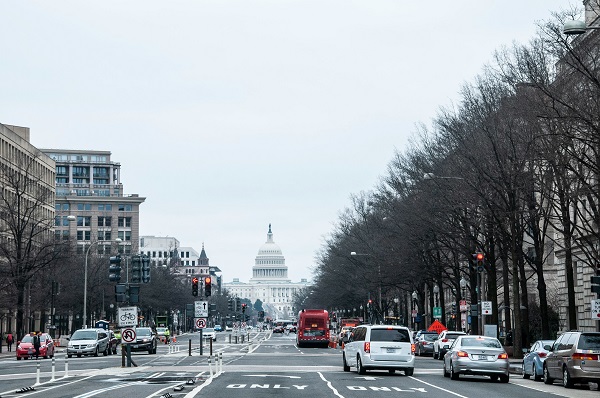Health
Stefani’s Story – An incredibly powerful message during Breast Cancer Awareness Month

Printed with permission from the author, Roxzane Sisson Armstrong
Stefani’s Story
Health
Selective reporting on measles outbreaks is a globalist smear campaign against Trump administration.

From LifeSiteNews
Ontario has a larger outbreak than Texas. European cases dwarf the Texas outbreak. But the World Health Organization has launched a travel advisory for the United States.
In the currently ongoing outbreak, there have been about 572 measles cases in Ontario, Canada. This is a significantly larger outbreak than the currently hyped one in Texas, which has about 422 cases. The mainstream media has almost completely ignored the Ontario outbreak – their reporting has only focused on the Texas outbreak.
Ontario’s top public health official, Dr. Kieran Moore, does not recommend mandatory vaccination and says the standard public health measures to limit the spread are working. This is a very reasonable response, yet when Sec. Kennedy says something similar; he is viciously attacked.
It is evident by the mainstream media response to the Ontario outbreak versus the Texas outbreak that this is yet another example of the liberal media/pharma machine harassing Kennedy and President Trump.
However, this reporting has an even more sinister aspect – as the media appears to have taken their lead from the World Health Organization.
The World Health Organization has launched a travel advisory for the United States. See the screenshots below (the first screenshot is from an AI summarizer at BRAVE and the second one is from the WHO website):


But what about Canada’s outbreak? Why isn’t Canada mentioned in the travel advisory? Was it an oversight? Did the WHO release a travel advisory just for Canada?
The answer is that the WHO has not put out a travel advisory for Canada, or Ontario, Canada.
In fact, the AI summarizer at BRAVE is clear that the WHO doesn’t put out travel advisories for individual countries, like Canada… The new normal is that the WHO puts out special advisories only for the United States <insert sarcasm>.

And in fact, a search on the WHO website yields not a single mention of the measles outbreak in Canada.

In fact, the WHO places the 422 measles cases in the United States on par with the earthquake in Myanmar, which may have killed up to 10,000 people, all told.
But somehow the 572 cases of measles in Canada don’t deserve a mention.

But wait – the story gets even more bizarre.
The European Region, which includes central Asia, continues to have a significantly high number of measles cases.
The WHO European Region has a population of approximately 745 million people, and had about 127,350 measles cases last year, or 1 in 5,850 people.
Yet – crickets from mainstream media on this factoid.

Why the outcry over 422 measles in Texas?
Here are some ideas:
- To reduce support for RFK Jr., Trump, and MAHA by the American people.
- To scare parents into vaccinating.
- To increase the money going to public health for vaccine stockpiling.
- To support the liberal left in their obsessive hatred of anything MAHA.
- Because the WHO put out a travel advisory.
In the meantime, the WHO has announced that, despite budgetary cuts, they have a $2.5 billion gap for 2025-2027. WHO Director General Tedros correctly blamed Trump for the deficit. However, what Tedros gets wrong is that this deficit is a well-deserved consequence of years of corruption at the WHO leading to this outcome.
This is how it is done, folks.
This is called retaliation by the World Health Organization against the Trump administration.
Another wrap-up smear in action. The deep state and the globalists are pulling out all the stops to attack Trump and Kennedy via “trumped-up” WHO travel advisories and emergency reports that are then reported on breathlessly and uncritically by mainstream media. The propaganda machine continues unabated.
Reprinted with permission from Robert Malone.
COVID-19
Trump’s new NIH head fires top Fauci allies and COVID shot promoters, including Fauci’s wife

From LifeSiteNews
“During the pandemic Fauci’s bioethicist wife, Christine Grady, offered nurses a choice: Get vaccinated, or lose your job,” noted The COVID-19 History Project on X. “Yesterday, she was offered a choice: Transfer to an office in Alaska, or lose your job. What’s fair is fair. Everyone deserves a choice,” explained the COVID watchdog account.
On day one of his new job as head of the National Institutes of Health (NIH), Dr. Jay Bhattacharya removed four powerful agency heads, including Dr. Anthony Fauci’s wife, Christine Grady, and others associated with the questionable handling of the COVID-19 shots.
Grady, who had served as chief of the agency’s Department of Bioethics, and other longtime Fauci allies in top posts at the NIH involved in the development and distribution of the untested COVID shots produced by Big Pharma were offered jobs in Alaska and other remote locales far away from the NIH’s sprawling Bethesda, Maryland, complex just outside Washington, D.C.
The purge came amid massive layoffs in health-related agencies under the umbrella of Health and Human Services (HHS), now headed by the Make America Healthy Again (MAHA) movement’s founder, Robert F. Kennedy Jr., who has long questioned vaccine safety and American medicine’s focus on treating disease rather than preventing it.
A total of about 20,000 personnel – mostly bureaucrats – or about 25 percent of the HHS workforce have been or will be handed pink slips amid Kennedy’s realignment of the agency.
MAHA critics were quick to call Tuesday’s axing of Fauci confederates as “one of the darkest days in modern scientific history” fueled by Kennedy’s desire to exact revenge on Fauci’s former trusted associates who represent the antithesis of the MAHA movement.
However, the revamping of the federal government’s side of the health industry is no more harsh than the treatment meted out by those formerly in control who, at best, suppressed, and worst, punished those who questioned their iron grip on health-industry regulations and standards.
For years, Kennedy’s critics have dismissed his quest to revamp healthcare and his questioning of the efficacy of the COVID-19 mRNA jabs as anti-science, labeling him as an “anti-vaxxer” in order to suppress his messaging.
Dr. Francis Collins – whom Bhattacharya replaced as head of NIH – in an October 2020 email to Fauci condemned Bhattacharya as a “fringe epidemiologist” because he had co-authored the Great Barrington Declaration, which criticized harmful COVID lockdown policies.
“During the pandemic Fauci’s bioethicist wife, Christine Grady, offered nurses a choice: Get vaccinated, or lose your job,” noted The COVID-19 History Project on X.
“Yesterday, she was offered a choice: Transfer to an office in Alaska, or lose your job. What’s fair is fair. Everyone deserves a choice,” explained the COVID watchdog account.
“We spend 4X more than Italy on healthcare — and live 7 years less. Dead last in cancer rates. This isn’t science — it’s a system profiting off sick kids,” explained Calley Means, RFK Jr. HHS advisor during an interview with Laura Ingraham following the NIH firings.
“Firing the people who oversaw this? That’s step one,” declared Means.
Other NIH officials who were offered reassignments were Dr. Jeanne Marrazzo, who succeeded Fauci as head of the National Institute of Allergy and Infectious Diseases (NIAID), Dr. Clifford Lane, a close Fauci ally who served as deputy director for clinical research at NIAID, and Dr. Emily Erbelding, NIAID’s microbiology and infectious diseases director.
-

 2025 Federal Election19 hours ago
2025 Federal Election19 hours agoPoilievre To Create ‘Canada First’ National Energy Corridor
-

 2025 Federal Election1 day ago
2025 Federal Election1 day agoMainstream Media Election Coverage: If the Election Was a NHL Game, the Ice Would be Constantly Tilted Up and to the Left
-

 International1 day ago
International1 day agoFREE MARINE LE PEN!’: Trump defends French populist against ‘lawfare’ charges
-

 Automotive2 days ago
Automotive2 days agoAuto giant shuts down foreign plants as Trump moves to protect U.S. industry
-

 Energy2 days ago
Energy2 days agoTrump Takes More Action To Get Government Out Of LNG’s Way
-

 Health2 days ago
Health2 days agoSelective reporting on measles outbreaks is a globalist smear campaign against Trump administration.
-

 2025 Federal Election1 day ago
2025 Federal Election1 day agoMark Carney is trying to market globalism as a ‘Canadian value.’ Will it work?
-

 Automotive21 hours ago
Automotive21 hours agoDark Web Tesla Doxxers Used Widely-Popular Parking App Data To Find Targets, Analysis Shows







